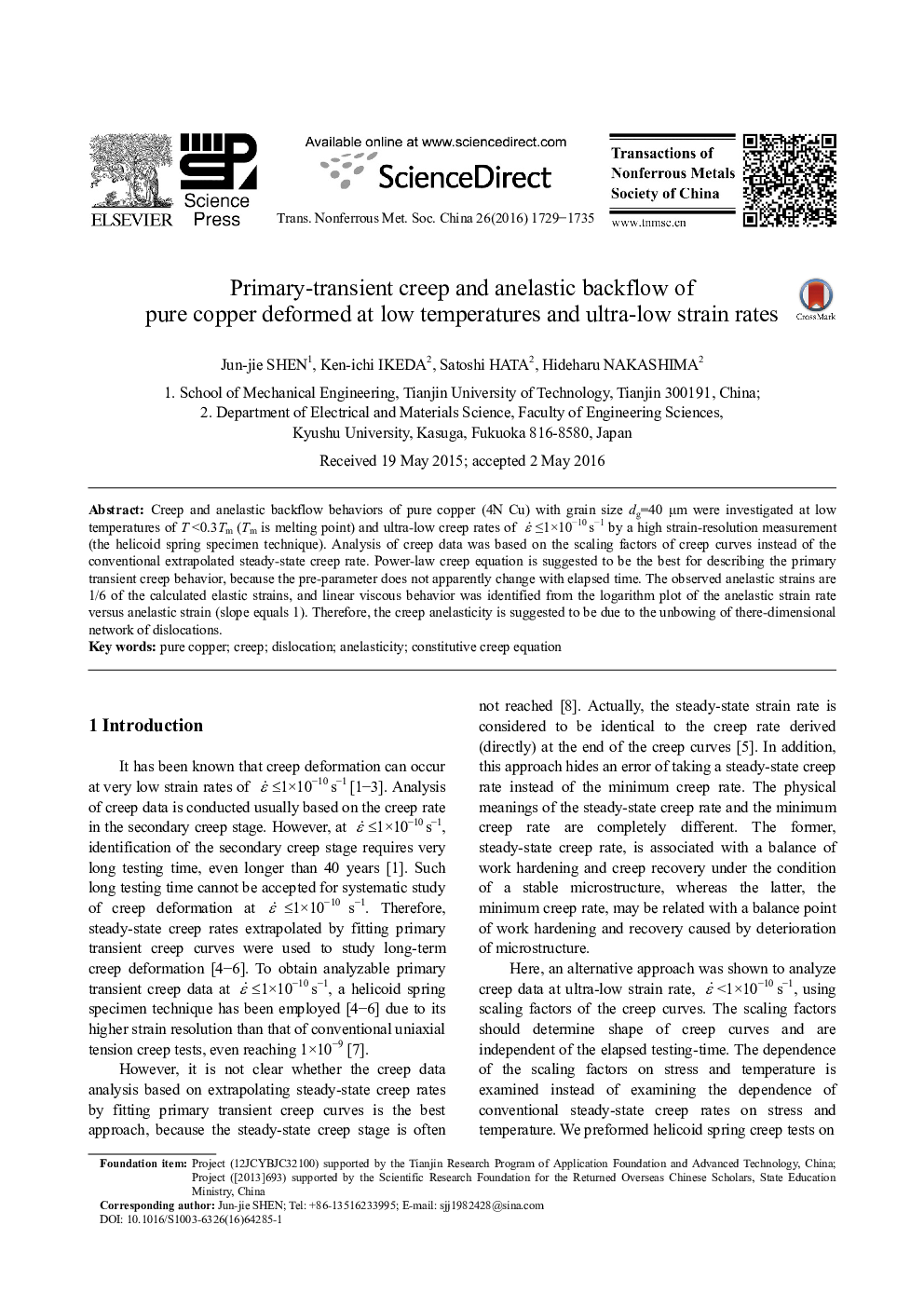| Article ID | Journal | Published Year | Pages | File Type |
|---|---|---|---|---|
| 1635548 | Transactions of Nonferrous Metals Society of China | 2016 | 7 Pages |
Creep and anelastic backflow behaviors of pure copper (4N Cu) with grain size dg=40 μm were investigated at low temperatures of T<0.3Tm (Tm is melting point) and ultra-low creep rates of ɛ˙=1×10−10s−1 by a high strain-resolution measurement (the helicoid spring specimen technique). Analysis of creep data was based on the scaling factors of creep curves instead of the conventional extrapolated steady-state creep rate. Power-law creep equation is suggested to be the best for describing the primary transient creep behavior, because the pre-parameter does not apparently change with elapsed time. The observed anelastic strains are 1/6 of the calculated elastic strains, and linear viscous behavior was identified from the logarithm plot of the anelastic strain rate versus anelastic strain (slope equals 1). Therefore, the creep anelasticity is suggested to be due to the unbowing of there-dimensional network of dislocations.
